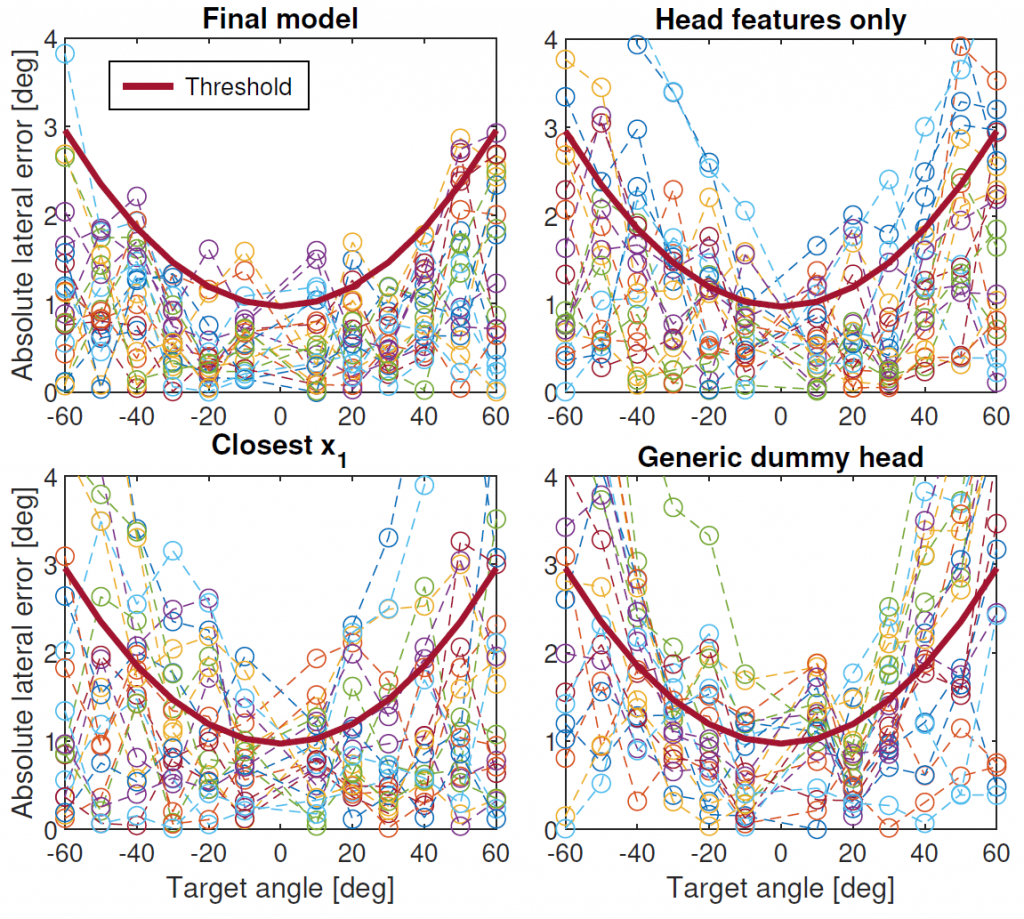The article “HRTF selection by anthropometric regression for improving horizontal localization accuracy” (S. Spagnol) was recently accepted for publication in the IEEE Signal Processing Letters. An early access version of the article is currently available at the following URL:
https://ieeexplore.ieee.org/document/9050904. It will be made open access in its final version.

The article focuses on objective HRTF selection from anthropometric measurements for minimizing localization error in the frontal half of the horizontal plane. Localization predictions for every pair of 90 subjects in the HUTUBS database are first computed through an interaural time difference-based auditory model, and an error metric based on the predicted lateral error is derived. A multiple stepwise linear regression model for predicting error from inter-subject anthropometric differences is then built on a subset of subjects and evaluated on a complementary test set. Results show that by using just three anthropometric parameters of the head and torso (head width, head depth, and shoulder circumference) the model is able to identify non-individual HRTFs whose predicted horizontal localization error generally lies below the localization blur. When using a lower number of anthropometric parameters, this result is not guaranteed.